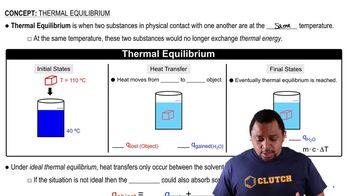Here are the essential concepts you must grasp in order to answer the question correctly.
Balancing Chemical Equations
Balancing chemical equations is essential in stoichiometry, ensuring that the number of atoms for each element is the same on both sides of the equation. This reflects the law of conservation of mass, which states that matter cannot be created or destroyed in a chemical reaction. In the given reaction, balancing involves adjusting coefficients to achieve this equality, which is crucial for accurate calculations of reactants and products.
Recommended video:
Balancing Chemical Equations
Thermal Decomposition
Thermal decomposition is a chemical reaction where a compound breaks down into simpler substances when heated. In this case, lead(II) sulfite (PbSO3) decomposes into lead(II) oxide (PbO) and sulfur dioxide (SO2) upon heating. Understanding this process is vital for predicting the products of the reaction and the conditions required for the reaction to occur.
Recommended video:
Ideal Gas Law
The Ideal Gas Law relates the pressure, volume, temperature, and number of moles of a gas through the equation PV = nRT. This law is fundamental for calculating the volume of gases produced in reactions, such as the sulfur dioxide generated from the decomposition of PbSO3. By knowing the amount of substance and the conditions (pressure and temperature), one can determine the volume of gas produced using this equation.
Recommended video:
 Verified step by step guidance
Verified step by step guidance

